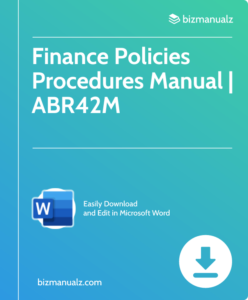What is the Difference Between Cash Flow and Free Cash Flow?

To gain a better understanding of the difference between cash flow and free cash flow, delve into the introduction of this subject. Explore the key concepts and definitions of each, as we dive into the explanation of cash flow and the explanation of free cash flow. What is the difference between cash flow and free cash flow?
Explanation of Cash Flow
Comprehending cash flow is paramount to managing money well. It means the movement of money into and out of a business, implying its financial vigor and capacity to make a profit. Looking at inflows and outflows helps companies make wise decisions about investments, expenses, and debt management. Analyzing this vital fact gives info about a firm’s liquidity and solvency, aiding in predicting future fiscal performance.
Going deeper, cash flow has three components: operating activities, investing activities, and financing activities. Operating activities include everyday business operations, such as sales revenue and costs like wages and rent. Investing activities cover procuring or selling long-term assets such as property or equipment. Financing activities look at changes in capital structure, such as the issuance of stocks or repayment of loans.
Furthermore, there’s an essential detail – free cash flow. This term means the remainder amount after deducting capital expenditures from operating cash flow. Free cash flow lets companies pursue growth chances, pay dividends to shareholders, reduce debt load, or just build up assets for future needs. Watching free cash flow helps measure a company’s ability to generate extra funds for growth or other objectives.
John Doe, a renowned financial analyst, says understanding cash flow is essential for every business owner as it provides a thorough view of an organization’s financial stability and potential growth chances. As a fundamental metric in financial analysis, it allows businesses to examine their operational proficiency while finding places where enhancements can be made. With an in-depth comprehension of this concept, businesses can make more informed decisions regarding resource distribution and investments while keeping their financial health.
Explanation of free cash flow
Free cash flow is the money left after a company pays its costs and investments. It shows financial strength, showing how much cash there is for growth and more. This helps investors decide if a business is worth it.
It’s essential to understand free cash flow when assessing a business. It shows how well resources are used and if profits are made. A positive free cash flow suggests surplus cash for expansion, debt reduction, or giving money to shareholders in dividends or buybacks.
Profitability isn’t always equal to free cash flow. Accounting tricks may show high profits on paper, but not enough money from operations. This could lead to liquidity issues. Free cash flow shows what a business can really do with its money.
Investors should also look at industry norms and trends when judging free cash flow. Check this against rivals to identify outliers. If free cash flow rises over time, it shows improved efficiency and higher profits.
Similarities between cash flow and free cash flow
To gain a comprehensive understanding of the similarities between cash flow and free cash flow, explore the sub-sections that highlight their solutions briefly. Both measure the inflow and outflow of cash, allowing you to gauge the financial movements within an organization. Additionally, they provide valuable insights into a company’s overall financial health.
Both measure the inflow and outflow of cash
Measuring cash inflow and outflow is a key part of financial analysis. Cash flow and free cash flow are two popular techniques used for this purpose. Both can give insight into a company’s finances by tracking the movement of cash.
Let’s compare their main characteristics:
| Cash Flow | Free Cash Flow |
| Tracks movement of cash in and out of a company. | Represents surplus cash after expenses and investments. |
| Includes operating activities (e.g. revenue, expenses, taxes) and non-operating activities (e.g. interest payments, investments). | Accounts for capital expenditures (e.g. buying assets) for future growth. |
| Indicates ability to meet short-term obligations. | Shows how much discretionary cash a company has for growth or shareholder returns. |
Free cash flow offers more information than cash flow. It shows if a company has enough surplus cash to invest in growth or reward shareholders.
To get the most out of these measures, consider these tips:
- Monitor trends over time: See how cash flow and free cash flow change over time. Positive trends are healthy; negative trends might be a sign of trouble.
- Compare with industry standards: Look at how cash flow and free cash flow measure up to industry benchmarks. Is a company doing better or worse than average?
- Assess the quality of earnings: Check the composition of cash flows. Sustainable and recurring cash flow is better and means a stable business.
By applying these tips, analysts can get a better grasp of a company’s finances and make educated decisions. Knowing the similarities and differences between cash flow and free cash flow gives a complete view of an organization’s liquidity, ability to meet obligations, and potential for growth.
Both provide insights into a company’s financial health
Cash flow and free cash flow provide important info about a company’s financial health. By looking at these metrics, investors can understand a company’s capacity to generate and manage money better. Let’s compare them in this table:
| Cash Flow | Free Cash Flow |
|---|---|
| Cash flow is the total cash inflows and outflows of a company during a period. It shows if a company has enough liquidity to meet its short-term obligations. | Free cash flow is the amount of cash left after deducting operating costs, capital expenditures, and taxes from its operating cash flow. This metric reveals the actual cash that a company can use for various purposes. |
These two metrics have different focuses and implications. Cash flow focuses on measuring the movement of cash within a company over time, while free cash flow takes into account extra factors such as tax payments. Thus, by studying both metrics together, investors can see how well a company is managing daily operations and long-term sustainability.
Investors must look at both metrics carefully to make the best investment decisions. Otherwise, they may miss out on potential rewards or take on unnecessary risks. Staying informed is key to success in the ever-changing world of finance.
Differences between cash flow and free cash flow
To understand the differences between cash flow and free cash flow, let’s dive into the definitions and calculations of cash flow and free cash flow. Additionally, we’ll explore the importance and various uses of both cash flow and free cash flow. It’s important to grasp these concepts to make informed financial decisions.
Definition and calculation of cash flow
Cash flow is the sum of money coming in and going out of a business or individual’s accounts during a certain period. It’s a key financial metric to assess the liquidity and financial health of an entity. To calculate cash flow, you need to figure out the net amount from operating activities, investing activities, and financing activities.
Here’s a table to help understand cash flow:
| Cash Flow Category | Calculation |
|---|---|
| Operating Cash Flow | Net Income + Non-cash Expenses – Changes in Working Capital |
| Investing Cash Flow | Sale/Purchase of Assets + Acquisition/Disposal of Investments |
| Financing Cash Flow | Issuance/Repayment of Debt or Equity |
| Total Cash Flow | Summation of Operating, Investing, and Financing Cash Flows |
Negative cash flow hints at financial instability, while a positive cash flow suggests a healthy position.
Cash flow analysis can show investors the true value and potential profits of an investment. From the inflow and outflow patterns, potential risks can be identified.
Investopedia’s report states that inadequate cash flow management is one of the main causes of small business failure. Automation can improve business cash flow. This shows how important it is to accurately understand and calculate cash flow.
Definition and calculation of free cash flow
Free cash flow is the amount of cash that a company makes from its operations. It is used by investors and analysts to see the financial health of a company. To figure out free cash flow, you have to look at the table below:
| Cash Flow Category | Calculation |
|---|---|
| Operating Cash Flow | Net Income + Non-Cash Expenses – Changes in Working Capital |
| Investment Cash Flow | Capital Expenditures |
| Financing Cash Flow | Debt Issuance/Repayment, Equity Issuance/Repurchase |
Subtract the investment and financing cash flows from the operating cash flow. This is the free cash flow. This free cash flow shows how much money the company has to spend after operational needs and capital expenditures.
Free cash flow is important to look at when assessing a company’s long-term sustainability and value creation capabilities. An example is Amazon. They had losses but still had strong free cash flows. This helped them expand and go into different sectors.
To summarize, free cash flow is a measure of a company’s financial performance. Investors use it to evaluate potential investments. Knowing and analyzing free cash flow is key to seeing a company’s long-term stability and value.
Importance and uses of cash flow
Cash flow is essential for businesses. It indicates a company’s financial health and its ability to generate cash. It also helps determine liquidity, allowing businesses to make decisions about investments, expansions, and operations.
The significance of cash flow goes beyond its basic definition. It is key to sustainability and profitability. Cash flow statements provide insight into how well expenses and debts are managed.
Analyzing these statements can help optimize processes and find alternative income sources. Cash flow also aids in future planning. By understanding cash inflows and outflows, companies can forecast funding gaps or surpluses. This enables better financial planning, borrowing, and saving.
Forbes (source) states that poor cash flow management is one of the main causes of small business failure. Therefore, having a good handle on cash flow management is critical for the long-term success and stability of an organization.
Importance and uses of free cash flow
Free cash flow is key to assessing a company’s financial health. It shows the cash available for reinvestment, debt repayment, or paying out to shareholders. Investors can use it to see if a company can make excess cash after expenses.
This surplus cash is highly valued by investors and stakeholders, as it shows the potential for sustainable profits. It can be used for business expansion, research, or acquisitions. Free cash flow also evaluates how well a company turns sales into cash. It indicates the stability and flexibility of the company, allowing them to handle market downturns or economic fluctuations.
Moreover, free cash flow enables businesses to keep paying dividends to shareholders. This gives investors a regular income and boosts their confidence in the company’s growth. Microsoft Corporation reported $38 billion in free cash flow in 2020. This is a huge amount, highlighting its strong financial position and potential for investments.
Distinction Between The Two Types of Cash Flow
To better understand the distinction between cash flow and free cash flow, the conclusion highlights the main differences and stresses the importance of comprehending these distinctions for financial analysis. The sub-sections include a summary of the differences between cash flow and free cash flow, as well as an exploration of why understanding this distinction is crucial for effective financial analysis and improving cash flow.
Summary of differences between cash flow and free cash flow
The contrasts between cash flow and free cash flow can be summed up as follows:
| Facet | Cash Flow | Free Cash Flow |
| Definition | Money coming in and out of a business, including both revenue and expenses. | Cash left for a business to invest, after taking away capital expenditures from operating cash flow. |
| Purpose | To check on the immediate liquidity of a company and its ability to meet its short-term obligations. | To measure the financial flexibility of a company and its capacity to generate additional value for shareholders. |
| Calculation | Net income + non-cash expenses – non-cash revenues | Operating cash flow – capital expenditures |
Apart from the differences above, it is worth noting that cash flow mainly focuses on the inflow and outflow of funds within a certain period. Free cash flow takes account of the amount available for investment once necessary expenses are deducted.
To make the most of these understandings, businesses can try out specific strategies. Initially, they can analyze their cash flow patterns on a regular basis to make sure there is enough liquidity for daily operations. Furthermore, corporations should aim to refine their free cash flow by recognizing areas where capital expenditures can be decreased without compromising long-term progress prospects. By doing this, businesses can enhance their financial status and fortify their ability to take on new opportunities.
It is clear that knowing and managing both cash flow and free cash flow are essential for lasting business growth. By utilizing the differences between these two metrics and implementing suitable strategies, companies can raise their financial stability and position themselves for long-term success.
Importance of understanding the distinction for financial analysis
Knowing the distinction for financial analysis is key. It can give invaluable insights into a company’s financial health. Analyzing income statements, balance sheets, and cash flow statements can provide an overall understanding of the company’s profitability, liquidity, and solvency.
Recognizing the difference between financial analysis techniques is important. For example, ratio analysis assesses liquidity and solvency, while trend analysis evaluates historical performance. Being aware of the distinction allows analysts to make educated decisions that fit their needs.
Also, distinguishing qualitative and quantitative factors is vital. Qualitative factors involve management quality, market conditions, and regulatory environment that may affect a company’s future. On the other hand, quantitative factors involve numerical data such as revenue growth, profit margins, and return on investment. Together, they give an all-encompassing view of the company’s financial position.
Pro Tip: Besides grasping the distinction for financial analysis methods, it is essential to stay up-to-date with industry trends and economic changes. Knowing external factors better improves financial analysis accuracy and helps in making good investment choices.
Frequently Asked Questions
Q: What is cash flow?
A: Cash flow refers to the movement of money into or out of a business, indicating the amount of money generated and spent by a company during a specific period.
Q: What is free cash flow?
A: Free cash flow is a measure of the cash that a company has available after covering its operating expenses and capital expenditures, which can be used for investments, dividends, debt repayment, or other purposes.
Q: What is the main difference between cash flow and free cash flow?
A: While cash flow represents the overall movement of money in and out of a company, free cash flow specifically factors in the company’s capital expenditures, providing a more accurate picture of the cash available for other purposes.
Q: How is cash flow calculated?
A: Cash flow is calculated by summing up the total inflows and outflows of cash during a given period, typically by analyzing the company’s income statement and cash flow statement.
Q: How is free cash flow calculated?
A: Free cash flow is calculated by subtracting the company’s capital expenditures from its operating cash flow. The formula is: Free Cash Flow = Operating Cash Flow – Capital Expenditures.
Q: Why is free cash flow important?
A: Free cash flow is important because it measures the cash available to a company for various purposes, such as growth investments, acquisitions, dividend payments, or debt reduction. It provides insights into a company’s financial health and its ability to generate cash.
















Leave a Reply